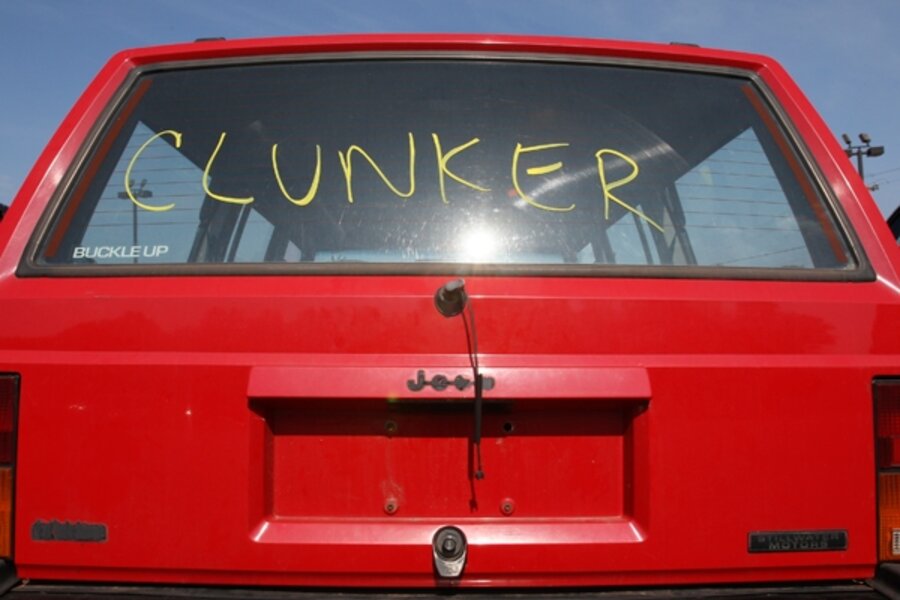Report: Cash for Clunkers was a lemon
American taxpayers paid a lot of cash for those clunkers: $24,000 for each new car sold, according to a study released Wednesday.
That's a lot of money, especially when the so-called "cash for clunker" stimulus program offered only a maximum $4,500 in cash for each person who traded in an old gas-guzzler and bought a new car.
The government could have done almost as well by just giving away cars for free, instead of creating an elaborate incentive program, according to an analysis by the automotive information firm Edmunds.com in Santa Monica, Calif.
What happened?
Well, it's in how Edmunds crunched the numbers. A valid way to evaluate the program economically, it says, is to look at how many people purchased cars that otherwise wouldn't have been bought. The firm says that number is about 125,000 cars. By that measure, the government spent $24,000 to generate each sale of a new car.
For comparison, the average price for a new vehicle in August 2009 was $26,915, minus an average cash rebate of $1,667.
In all, the government spent $3 billion on a program that provided cash toward 690,000 car purchases – about $4,348 per car. That makes 565,000 people who got as much as $4,500 to buy a car they would have bought anyway, according to the Edmunds analysis.
A 'weak' impact
The analysis may dampen views about the effectiveness of a one of the most visible pieces of President Obama's $787 economic stimulus package, designed to save jobs across the US.
Hordes of Americans scurried this summer to do paperwork to trade in certifiable clunkers – old cars that got fewer than 18 miles per gallon – and try to trade them in.
"The economic claims have been rendered quite weak," David Tompkins, one of the researchers, said in Edmunds' AutoObserver.com, an online publication. Still, the clunker program did help stimulate some car sales at a very weak moment for automakers.
The program also may have some environmental benefits. "Our research indicates that without the Cash for Clunkers program, many customers would not have traded in an old vehicle when making a new purchase,” Mr. Tompkins said.
The law required those old vehicles to go to the junk yard, so they are no longer on the road.
The analysis hinges on how to calculate the number of people who were ready to buy a car even without the subsidy.
Edmunds' used a team of statisticians, who examined sales trends for luxury vehicles and others not included in the clunker program. They used those trends to gauge where sales would have been for the industry, absent any stimulus program. These "informed estimates" were independently verified, Edmunds says, by examining transaction data.
Let's do it again?
The study comes as Congress is considering whether to extend a similar stimulus program in the housing market – an $8,000 tax credit for first-time home buyers. The move appears to have gained traction this week, thanks to efforts by Senate majority leader Harry Reid (D) of Nevada, one of the states hardest hit by the housing downturn.
The housing tax credit is designed to spur buying activity, and thus help stabilize the housing market. Congress is considering a measure that would not only extend the program into next year, but also expand it to include purchasers who already own homes.
Economists are divided over the merits of this and other stimulus programs.
Critics of government stimulus programs say they often simply move money from one pocket to another, or perhaps shift the timing of consumer spending, without having a large impact on gross domestic product (GDP). Backers say the American Recovery and Reinvestment Act is indeed helping to boost GDP and has stopped what had been a downward spiral in the economy.
Jeremy Anwyl, chief executive of Edmunds, says the firm's study points to one promising conclusion about the economy: Auto sales were already rising from their recession trough even without the clunker program, though they remain well below their pre-recession levels.
-----
Follow us on Twitter.





